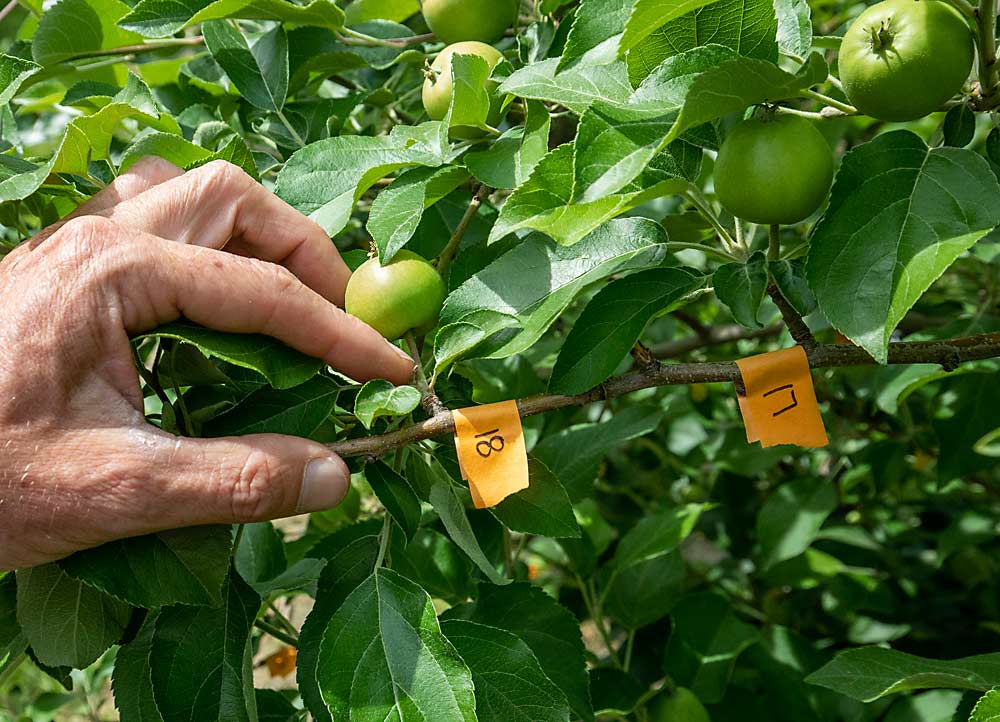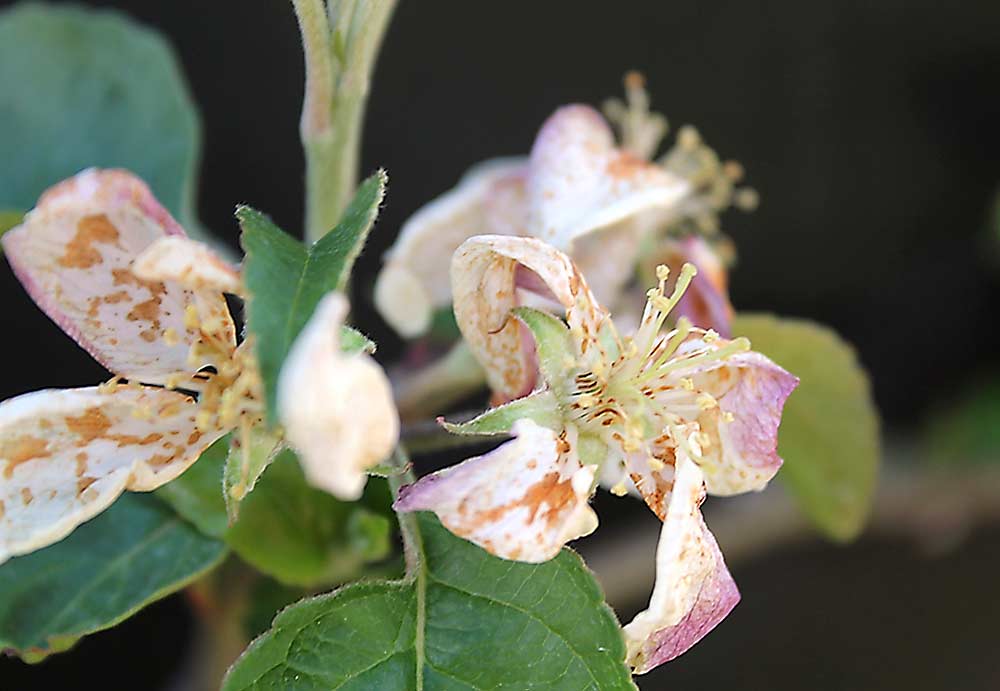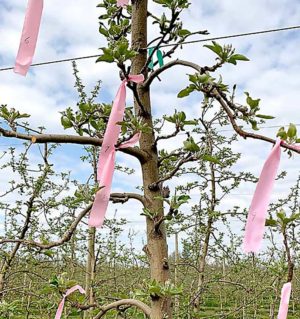
Precision crop load management starts early in the season, when crucial pruning and blossom thinning decisions are made, said Michigan State University tree fruit physiologist Todd Einhorn.
“It’s essential that we begin early,” Einhorn said. “We don’t want to wait until fruit are 10 to 12 millimeters.”
Einhorn and other speakers offered tips and reminders about precision crop load management as part of an apple education session during the Great Lakes Fruit, Vegetable and Farm Market EXPO in Grand Rapids, Michigan, in December.
Pruning is the first step in the crop load management process — the first crack at meeting your target crop number. You want to reduce the number of fruit buds to about 140 percent of your target load — “giving yourself a little cushion in case frost events come along and you lose some crop,” Einhorn said.
Final fruit quality depends on what happens in the first 30 to 45 days after bloom, Einhorn said. If the crop load is too high, the fruit will not color or size well, and few come off in the first pick.
“The goal of precision crop load management is, ultimately, profitability,” Einhorn said. “We’re trying to make things more efficient, but at the end of the day it has to be profitable.”
Einhorn said emerging computer vision technologies are helping to improve precision crop load management.
During the same EXPO session, North Carolina State University professor Tom Kon discussed a computer vision technology project in North Carolina. He’s hoping to publish the results soon.
Virginia Tech professor Sherif Sherif said thinning during bloom produces the largest fruit, the maximum return bloom and the most consistent annual bearing. Blossom thinning is good for organic apple growers, too, because it’s their only chemical thinning option.
Sherif went over the advantages of precision blossom thinning using the pollen tube growth model, which was developed by Virginia Tech researchers.

The pollen tube growth model was designed to make blossom thinning less subjective by timing thinning applications using the growth of the pollen tube within the flower.
Virginia Tech researchers have studied available blossom thinning tools, including the Washington standard of lime sulfur and oil. They found that rates of 3 percent lime sulfur and 2 percent JMS Stylet-Oil have good thinning activity in the Mid-Atlantic, but can cause severe russeting. Rates of 1.5–2 percent lime sulfur and 2 percent oil showed good thinning results and less fruit russeting. Rex Lime Sulfur Solution and NovaSource Lime-Sulfur Solution were equally effective, Sherif said.
Virginia Tech researchers are still evaluating new and existing blossom thinning materials, Sherif said, while Cornell researchers are using existing data and machine learning techniques to refine and improve the pollen tube growth model.
—by Matt Milkovich








Leave A Comment